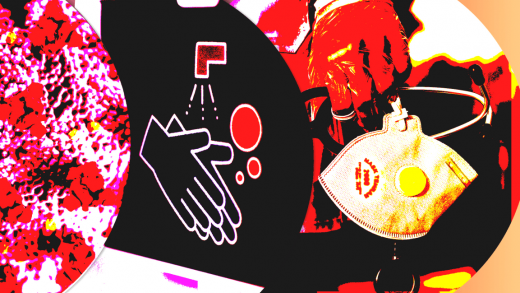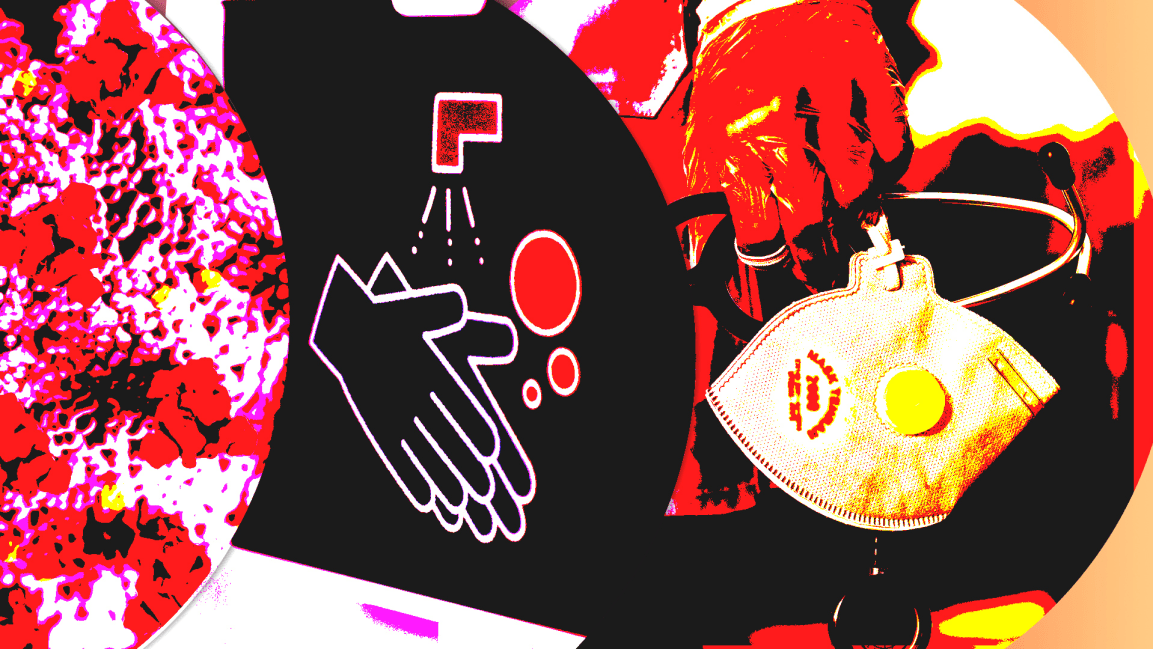COVID-19 showed that science has work to do in its fight against misinformation
As the world spiraled toward calamity with the SARS-CoV-2 outbreak, the essential role of virologists, infectious disease specialists, epidemiologists, and other scientists was thrust into the spotlight. Not only were these public health experts tasked with interpreting the rapidly evolving scientific and medical data, but they were often moved from the bench to the microphone and into the 24-hour media cycle. The public was looking for answers—but where would they derive them? This is where the scientific community became so important, with the distinct ability to assess the evidence through an expert lens and deliver unbiased viewpoints on the implications.
The first task facing the scientific community was how to communicate about the virus itself—what it was, what it wasn’t, how it could be transmitted, and the true risks involved. Comparisons to other viral pathogens immediately emerged, particularly the common cold and seasonal influenza. Though these comparisons were somewhat useful to help the public understand the nature of the virus itself, they were often incorrectly extrapolated to make inaccurate, “broad stroke” assessments. Phrases like “this is just a bad flu” or “this only affects the elderly” led individuals to minimize the potential impact this novel coronavirus could wreak on the population. The truth is that scientists were learning in real time what the nature of the virus was; there was no pre-established “playbook” of recommendations. In a 24/7 news cycle, with a population accustomed to searching “Dr. Google” for health information, patience wore thin, and the growing desire for answers led even nonexpert views to be taken as fact vs. opinion.
Semantics and scientific accuracy matter
In general, science was not always put into appropriate context by experts who actually knew the data—and many underestimated how quickly messaging could be spun in different directions. Most recently we saw this play out when a prominent NFL quarterback contracted COVID, leading to a widely televised debate about the semantics of “immunized” versus “vaccinated,” claiming he had been immunized through an alternative therapy. We can learn from these miscues and mix-ups for future public health crises. We must identify scientific thought leaders early on and not just build messaging, but work with them to see where potential misunderstanding/misappropriation may lie—then develop strategies to address these issues head on as they arise in real time.
What went wrong—share of voice versus quality of voice
Increasingly throughout the pandemic, non-health experts, including politicians, commentators, and high-profile influencers, began to have the loudest voice about the virus—regardless of their qualifications. Rather than strictly elevating scientific voices, empowering them to interpret the data, and explain the importance of specific public health approaches, those with personal and/or political agendas used their platforms to spread misinformation. As a result, policies around mask wearing, social distancing, business regulation, the safety of vaccines, and related issues became highly charged and politicized. Opinions grew stronger, and soon an argument from even those who were unqualified characterized a “legitimate debate” rather than what it was—nonexperts creating arguments against experts.
Even determining who was truly an “expert” became a laborious endeavor, with many commentators across traditional and social media failing to recognize that all scientists and medical specialists are not the same. True experts on issues related to viruses and their impact are primarily virologists, epidemiologists, and those on the front lines of treatment. Unfortunately, this stretching of the term “expert” only added further confusion and lessened the quality of scientific opinion on the situation.
To move forward, it is critical that communications professionals, including the media, elevate legitimate scientific voices for meaningful discussion, not simply those who align with specific political beliefs or unsubstantiated claims. Science and political conjecture should be separate, particularly when public health is so acutely in the balance, as during a global pandemic.
What we can learn and how we can move forward
We learned a lot over the last 20+ months that will help us be better prepared for future public health crises. There are five key lessons that can be applied in delivering accurate and impactful scientific communications to the public so that we are at the ready the next time a public health emergency strikes.
1) Use data and AI to inform a communication strategy. These tools are crucial to inform social listening and analytics early and often to recognize legitimate voices and elevate these voices through multiple channels, both traditional and digital, in order to ensure that they are heard above the cacophony of misinformation. For instance, data and AI social listening tools allow us to uncover scientifically credible voices who may have a great message but narrow reach. We can then amplify their voice by engaging with them and increasing their digital presence, while emulating their strategies and messaging to support experts in other spheres of influence.
2) Activate scientific influencers globally and locally. We commonly think about scientific leaders of national government agencies as the ideal scientific influencer. But many of the most important scientific voices include community physicians and public health leaders who can have influence at a local level and with traditionally underserved communities. We learned during the vaccine rollout that the messaging varied in clarity depending on demographics and zip codes, in the U.S. specifically. We also learned that we needed to identify relevant scientific voices for communities of color where there was skepticism based on historical injustices. For example, New York City did a great job boosting vaccinations in diverse neighborhoods by featuring local health experts of color with multilingual messages across many platforms—on social media, at sports events, and in bus terminals, to name a few. Hyperlocal efforts like this can be much more effective at driving change in underserved communities than national or global campaigns, which lack the same level of personal relevance.
3) Scientific experts must have a voice—online and offline. We cannot underestimate the importance of ensuring scientific experts have a voice on the right channels to communicate the right messages to the right audiences. Given digital is the foundation of most of our communications today, an active online presence is needed now more than ever. Although traditional publications and data presentations at medical meetings will continue to be a vital forum for science communications, being engaged in scientific dialogue via social media channels and other digital platforms is critical to ensure accuracy among key stakeholder audiences, other physicians and healthcare professionals, as well as consumers and patients. Some of best at doing this are virologists, epidemiologists, and scientists from institutions like Mount Sinai School of Medicine, the University of North Carolina and Yale University, among others. These medical and public health experts have hundreds of thousands of followers and actively engage them on social media on a daily basis.
4) Accuracy, simplification, and context are critical. Messaging should be carefully orchestrated to maintain accuracy while simultaneously providing important context, simplification of messages, and counter-messaging as needed. Thorough vetting and scenario planning should be executed so that any messaging can be immediately clarified upon questioning. Messaging is just the start—it is the objections and the argumentation that will be perpetual.
5) Catch and correct, early and often. Monitoring messaging in real time, again through social media and analytics, is the best way to see if incorrect information is gaining traction, and quickly employ a bench of scientific experts to clarify and help contain the misinformation. The scientific community’s fast reaction to faulty theories around experimental uses of hydroxychloroquine and ivermectin as COVID cures is a prime example of the need for agile and coordinated responses to dispel false information. Peter Hotez, MD, PhD, dean for the National School of Tropical Medicine at Baylor, specifically, has become one of the leading scientific voices during the pandemic to dispel these myths, while bringing other experts in to create a united front against misinformation. In today’s digital age, where information, both correct and incorrect, moves at the speed of light, we must help the scientific community stay one step ahead to ensure scientific expertise and analysis rule the day.
Jennifer Gottlieb is global president of Real Chemistry, a firm that leverages data, tech, and digital solutions to deliver communications and marketing services to the healthcare community. Alexander Ploss is an associate professor of molecular biology at Princeton University and pioneered the development of alternative animal models for potential COVID-19 therapeutics.
(36)



